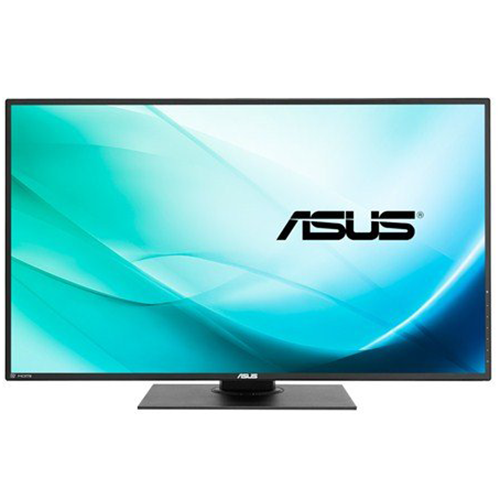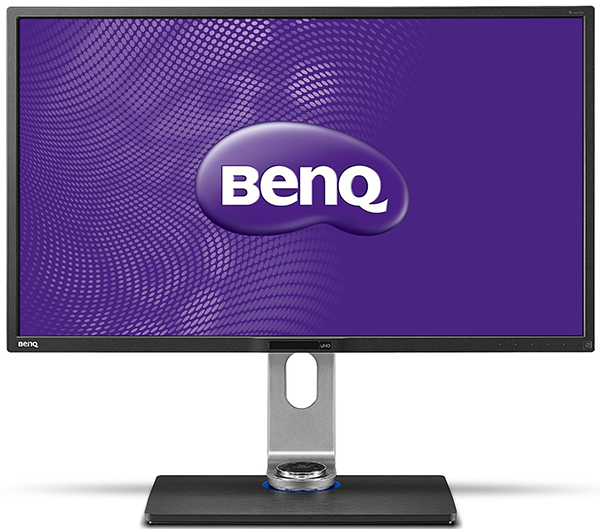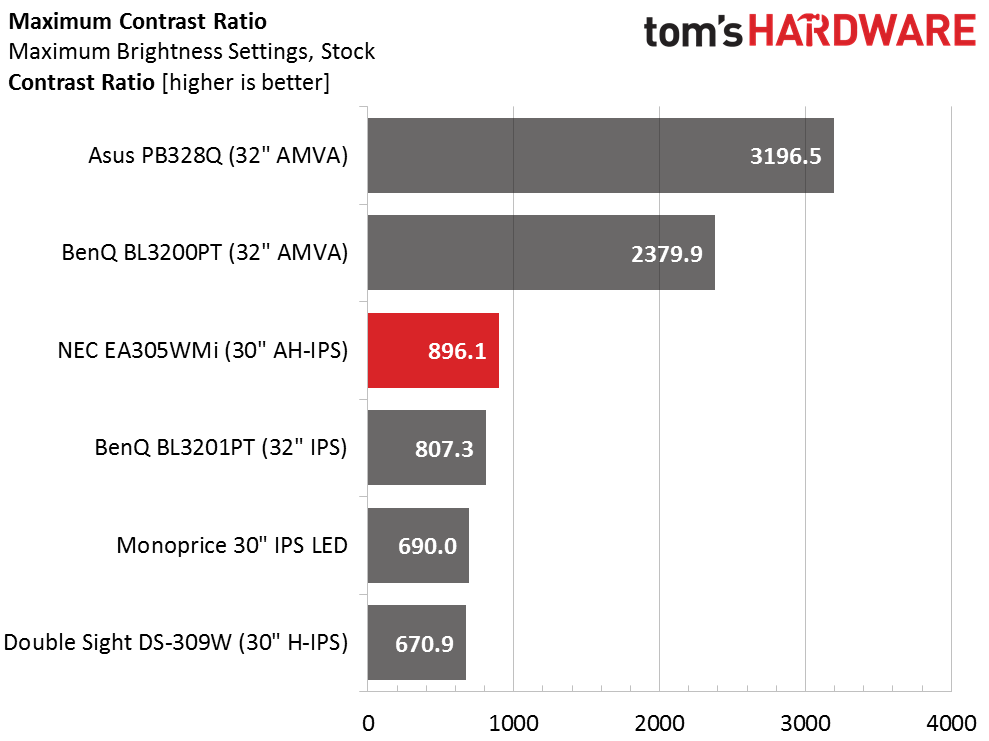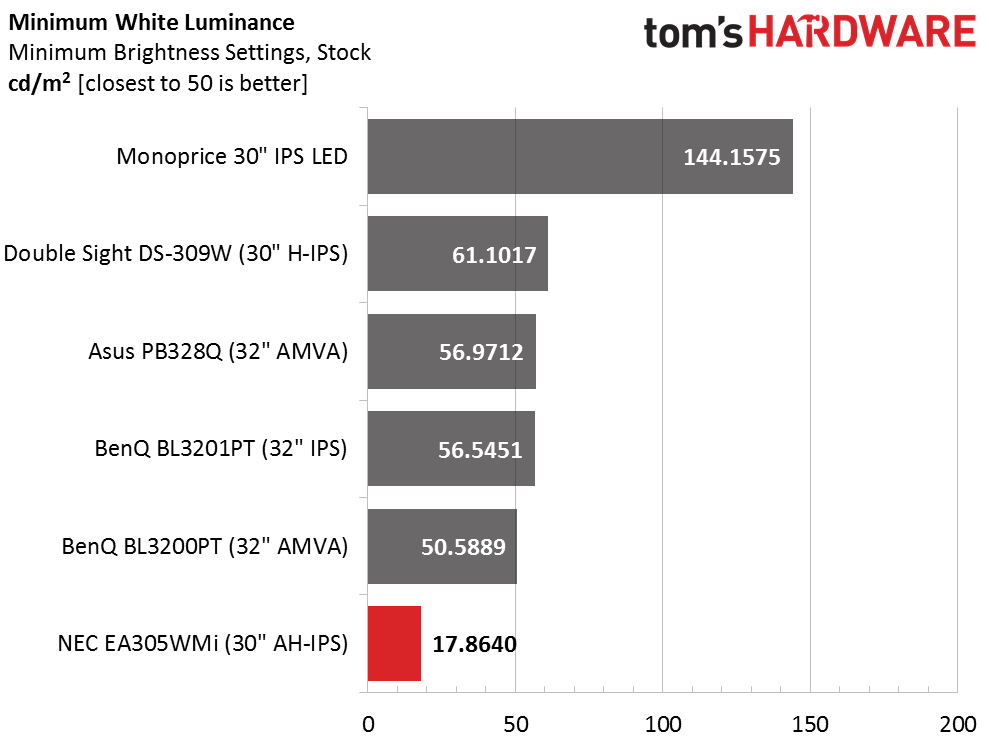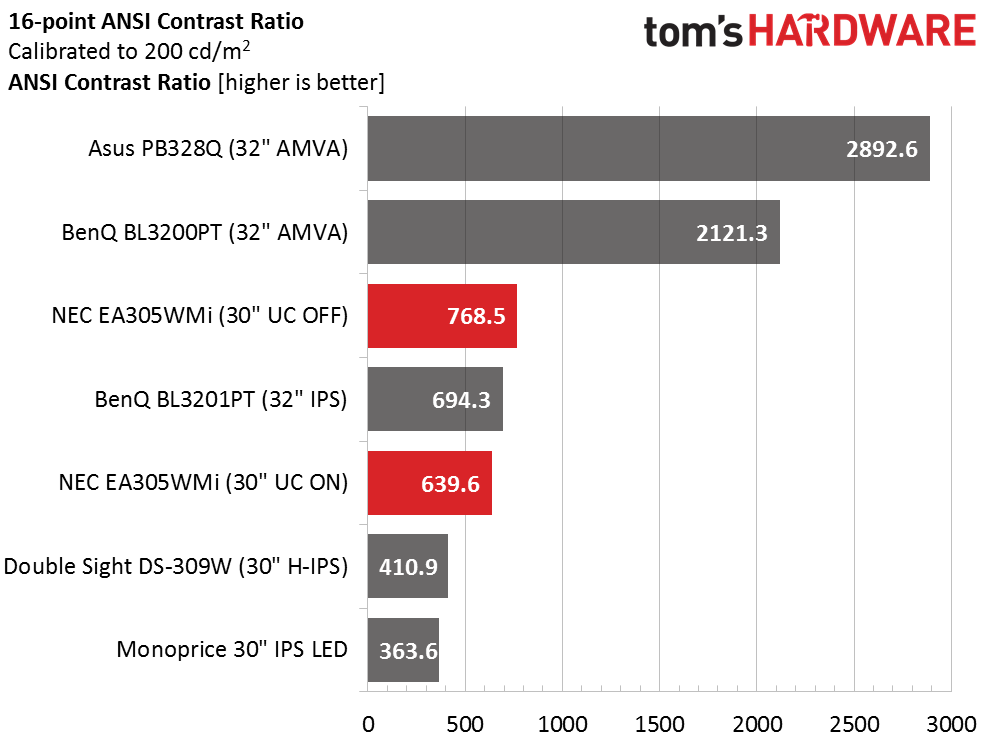NEC EA305WMi 30-inch 16:10 IPS Monitor Review
16:10 is an uncommon aspect ratio these days but NEC has introduced an excellent new 30-inch screen – the EA305WMi. It sports a wide gamut with a GB-r-LED backlight driving an AH-IPS panel. We’re checking it out today.
Why you can trust Tom's Hardware
Brightness And Contrast
To read about our monitor tests in-depth, please check out Display Testing Explained: How We Test Monitors and TVs. Brightness and Contrast testing is covered on page two.
Uncalibrated – Maximum Backlight Level
Amazingly, the DoubleSight DS-309W is still being manufactured even though we reviewed it in 2013. That and the MonoPrice 30” IPS are the only 16:10 panels in our database. To round out the group, we’ve added three other jumbo panels: the Asus PB328Q, plus BenQ’s BL3200PT and BL3201PT which is the only Ultra HD screen in the roundup. The rest are QHD.
NEC specs the EA305WMi at 350cd/m2 but our sample measured a little under that. When a panel is this large, 325.5817cd/m2 is a lot of output and you’ll never need to turn the brightness all the way up unless you’re working outdoors.
The results are a little skewed thanks to the inclusion of two VA panels in the mix. Of the rest, NEC delivers the lowest black level.
896.1:1 contrast is not stellar but the EA305WMi is the best-performing IPS panel of the group. In looking over our results for previous large panels (30 and 32 inches) we see only a couple that have higher contrast. So it seems that smaller monitors have a slight advantage in this metric. Of course VA will always score higher regardless of screen size.
Uncalibrated – Minimum Backlight Level
NEC monitors always have extremely low minimum backlight settings. Many of them drop into the single digits in fact. We’re not sure when you’d need so little output but if you do, the EA305WMi can fulfill that requirement. Setting the backlight on 12 will get you 50cd/m2.
The super-low backlight setting results in a correspondingly-low minimum black level; even beating one of the VA panels in the group.
Get Tom's Hardware's best news and in-depth reviews, straight to your inbox.
If the minimum white level were closer to 50cd/m2 we’d be concerned by a seven-percent swing in contrast. But when we increase the brightness control to 12, the contrast ratio is a more-expected 882.3:1. There is no difference in image depth or quality when the backlight is set between 12 and 100. Below 12 you’ll see just a tad less punch.
After Calibration to 200cd/m2
The EA305WMi’s uniformity compensation is fairly sparing in its application. It mainly affects the upper end of the brightness scale reducing output by 20-percent. As you’ll see in our uniformity tests, it isn’t really needed on our sample but it is there if you want to use it.
UniComp raises the black level just a bit which will further reduce the panel’s sequential contrast.
The end result of uniformity compensation is a 23-percent reduction in contrast. Considering the modest gains we saw in our tests on page seven, we don’t think its benefits outweigh the negatives. Even without it, calibration reduces contrast by 14 percent. This is mainly because the RGB controls start at or near their maximums. If they started center-range, more contrast could be preserved.
ANSI Contrast Ratio
Despite less-than-inspiring contrast numbers, our ANSI test shows a top-shelf grid-polarizer is being used. And interestingly, the uniformity compensation has less effect here. That result is eight-percent higher than the sequential one which is something we rarely see. So even though UC makes only a small impact on uniformity, it doesn’t harm intra-image contrast as much as other monitors we’ve tested with the feature.
Current page: Brightness And Contrast
Prev Page OSD Setup And Calibration Next Page Grayscale Tracking And Gamma Response
Christian Eberle is a Contributing Editor for Tom's Hardware US. He's a veteran reviewer of A/V equipment, specializing in monitors. Christian began his obsession with tech when he built his first PC in 1991, a 286 running DOS 3.0 at a blazing 12MHz. In 2006, he undertook training from the Imaging Science Foundation in video calibration and testing and thus started a passion for precise imaging that persists to this day. He is also a professional musician with a degree from the New England Conservatory as a classical bassoonist which he used to good effect as a performer with the West Point Army Band from 1987 to 2013. He enjoys watching movies and listening to high-end audio in his custom-built home theater and can be seen riding trails near his home on a race-ready ICE VTX recumbent trike. Christian enjoys the endless summer in Florida where he lives with his wife and Chihuahua and plays with orchestras around the state.
